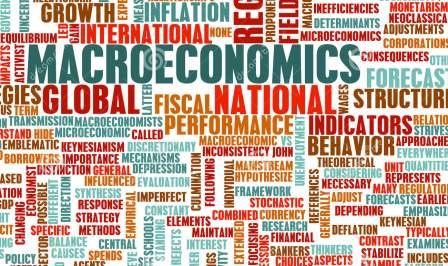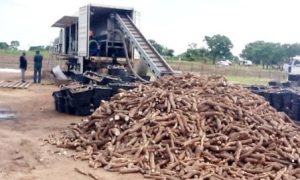To begin with, the CBN in its bid to enhance FX liquidity, address demand pressures, and support price discovery reintroduced the Retail Dutch Auction System (rDAS), which was previously suspended in 2015. The rDAS which allows the Apex Bank to directly sell FX to banks, with prices determined by the highest accepted bid, is intended to optimise FX liquidity and stabilise the exchange rate given its inherent market equilibrating mechanism. In the auction conducted after the reintroduction of the rDAS, 32 authorised dealer banks submitted bids totalling $1.2bn.
Out of this gross bid, only $876.3m from 26 banks were accepted at a cut-off rate of ₦1,495.0/$, while bids worth $313.7m from 6 banks were disqualified.
Although we commend the efforts of the CBN to stabilise the FX market, concerns remain about the long-term sustainability of this approach. We opine that the CBN may lack the FX war chest to meet all eligible demands over an extended period. For instance, the CBN estimated that Nigeria’s $36.3bn reserves (as of August 28th, 2024) could cover for 11 months while IMF estimate capped the import cover at 6 months. Regardless of the estimate admitted, we aver that Nigeria risks running aground its FX reserves in no distant period, if weekly demand remains at the level seen during the rDAS auction and inflows from organic channels do not outstrip outflows. Sadly, our assessment of FX demand-supply dynamics since 2006 revealed that the CBN has failed to meet the estimated average annual demand of $23.2bn in seven of the last eight years since 2015 (ex.2019) due mainly to the collapse of inflows from crude oil exports. To achieve a lasting solution to the FX rate quagmire, strategic fiscal policies are needed to boost economic productivity, including increasing oil production, enhancing remittances through official channels, optimising non-oil export size, and attracting long-term foreign direct investment.
Moving on, the July 2024 composite PMI data – an indicator index suggesting the short-to-medium term direction of the economy’s health based on aggregated scores of key sub-activities – printed at 49.7 points from 44.8 points the prior months. Based on PMI reading convention (PMI below 50.0 points means contraction), the July PMI print, though an improvement m/m, extended the contraction spell of the average economic activities across the three sectors of Agriculture, Services, and Industries to thirteen consecutive months. Weak sentiment in the Agriculture (49.7 points) and Industry (48.3 points) sectors largely contributed to the underwhelming reading for July.
New orders and employment levels declined in these sectors, driven by the dual shocks of exchange rate volatility and rising energy prices over the past 12 months. Conversely, the Services sector’s PMI showed modest improvement for the second month in a row, reaching 50.3 points compared to June’s 50.1 points. Overall, this dismal PMI trajectory indicates that the Nigerian economy is operating below its potential in creating value.
In other developments, NBS data revealed that the y/y headline inflation rate dropped by 79bps to 33.4% in July, marking the first decline in 19 months. While this decline aligned with our expectations, the magnitude of the drop was low due to emergence of fresh shocks. A priori, we had estimated that the headline rate would decrease by 107bps to 33.1% in July, aided on one hand by a high base year effect, and on the other, recent decline in the prices of certain farm outputs like yam, pepper, and vegetables due to gains from early harvest. However, the resurgence of PMS scarcity (with a knock on effect on transportation costs) and exchange rate shock (NAFEM rate depreciated 6.4% m/m to ₦1,608.73/$ in July), amplified the pressure on the core inflation basket which rose to 27.5% y/y from 27.4% previously. On the other hand, food inflation eased 135bps to 39.5%, aligning with expectations.
Looking forward, the weaker-than-expected decline in July inflation and the underwhelming Agriculture and Industry PMI indicates that the headline inflation rate in the second half of 2024 could deviate from our year-end estimate of 28.9% and annualised average rate of 31.7%. However, the successful implementation of the 150-day import tariff free window for selected basic food items, coupled with efforts to improve security in the agrarian sector and ongoing liquidity tightening by the CBN, could keep our projection on track.
Finally, we take a deeper look into the recently published Q2:2024 GDP data, which showed that the economy grew 3.2% y/y in real terms compared to 2.5% in Q2:2023. On a q/q basis, the real GDP performance marked a modest 4bps improvement from Q1:2024 given that real output size grossed ₦18.29tn as against ₦18.28tn in Q1. From a structural perspective, the GDP growth was jointly driven by oil and non-oil activities. Despite the decline in daily average crude oil production to 1.41mbpd in the quarter from 1.57mbpd in Q1:2024, the oil economy grew by 10.2% y/y, due mainly to low base year effect (the sector contracted by 13.3% in Q2:2023 owing to low output level of 1.22mbpd).
For the non-oil economy, real growth weakened to 2.8% y/y from 3.6% in Q2:2023, owing to slower y/y expansion in agriculture (1.4% vs 1.5%) and services (3.8% vs 4.4%) sectors. Meanwhile, the industries sector growth (up 3.5% y/y) outperformed the corresponding period in 2023 (down 1.9%), supported mainly by the 10. 0% y/y expansion in the crude petroleum production segment. On a q/q basis, the non-oil segment growth plateaued at 2.8% despite expansion in 17 out of the 19 sectors as against expansion in 15 sectors in Q1. Furthermore, we highlight three striking patterns in the sectoral GDP performance that call for improved strategy from the FG and other subnationals to avert major economic crises.
First, the resilience of the services sector is fast weakening, given that growth only came in at 3.8% as compared to 4.4% in the corresponding period of 2023. We are concerned that this worrisome trend may not be unconnected to the heightened pressure exerted on players in the sector, notably, the telecoms sector evidenced by the negative knock-on effect of exchange rate volatility in the last twelve to fourteen months on the sector (sector’s average growth have weakend to 4.4% from a 10-year average of 9.5%). Recall that MTN Nigeria’s shareholders fund was wiped off in 2023 after posting record exchange rate losses of ₦740.0bn.
Second, the agriculture sector growth at 1.4% is unflattering, considering the 2023 base where growth printed at 1.5% despite disruptions from the naira scarcity episode and pre-election jitters. In addition, the agriculture sector growth is weak for an economy with an estimated population growth rate of 2.5% per annum. Even in the eight years from 2007 to 2014 when the sector’s growth averaged 3.2%, annual food importation bill was north of $1.5bn at an exchange rate below ₦200.00/$. This further justifies why food inflation has spiralled above 40.0% in recent months.
Lastly, though the industries sector grew by 3.5% due largely to low base year effect (the sector was in contraction in Q2:2023 at -1.9%), there is a high risk that the sector growth could at best, fall below 1.0% in Q3:2024 if crude oil production fails to improve from the current average of 1.41mbpd. This is a low hanging fruit we believe the FG should not handle with kid gloves if actual revenue for the year would ever cross 40.0% of the ₦19.7tn target.
Afrinvest



























